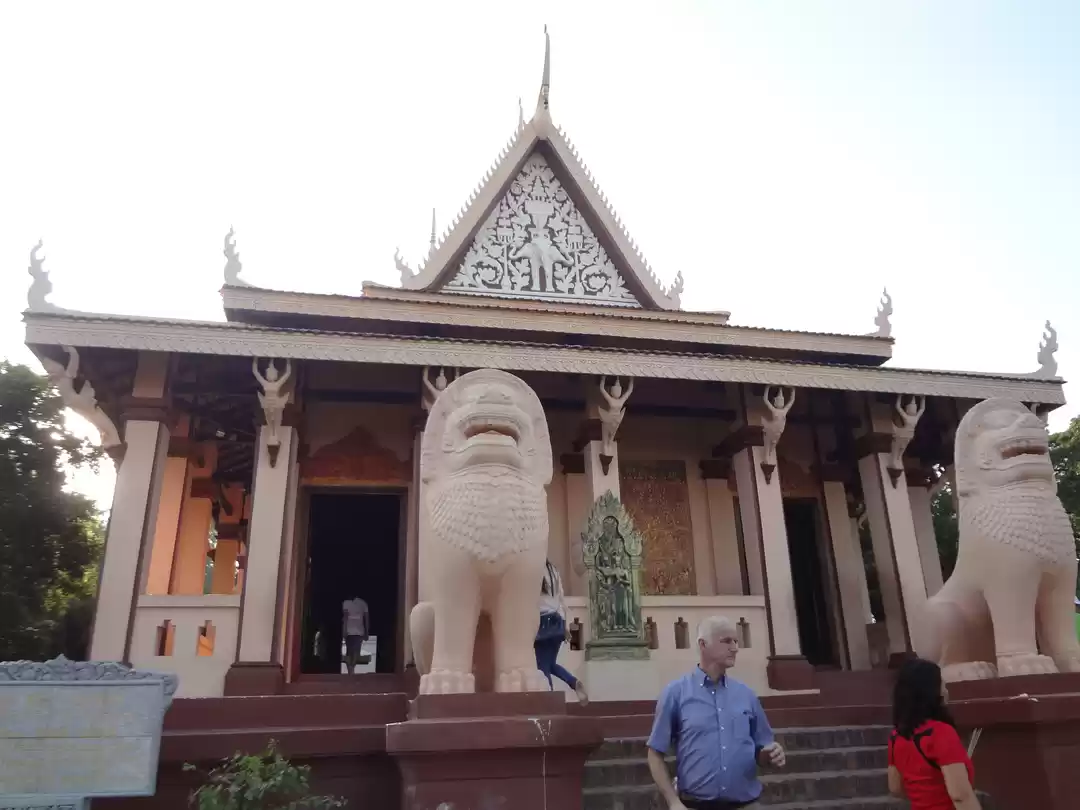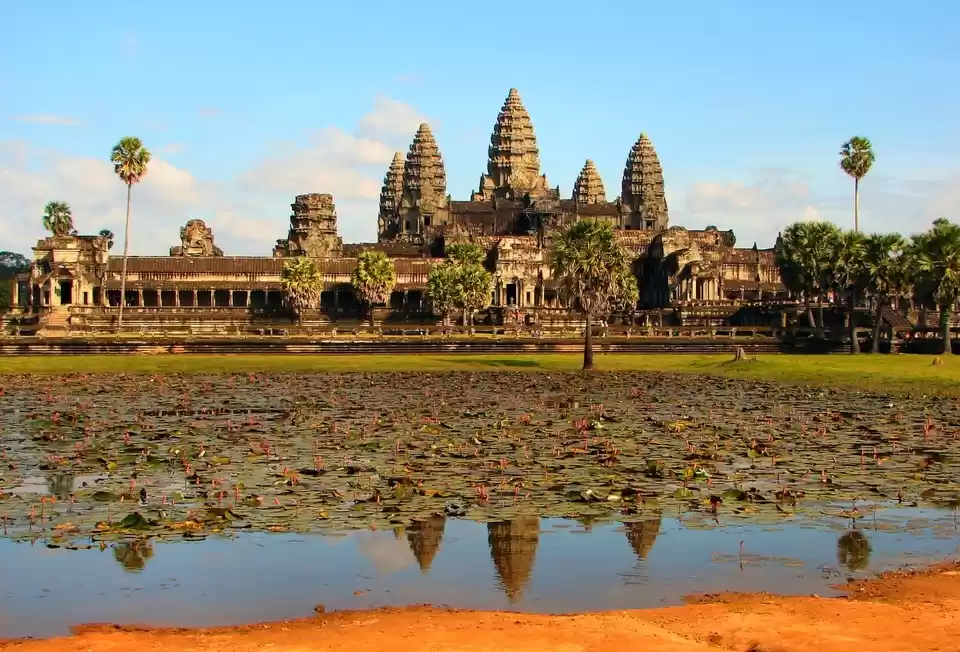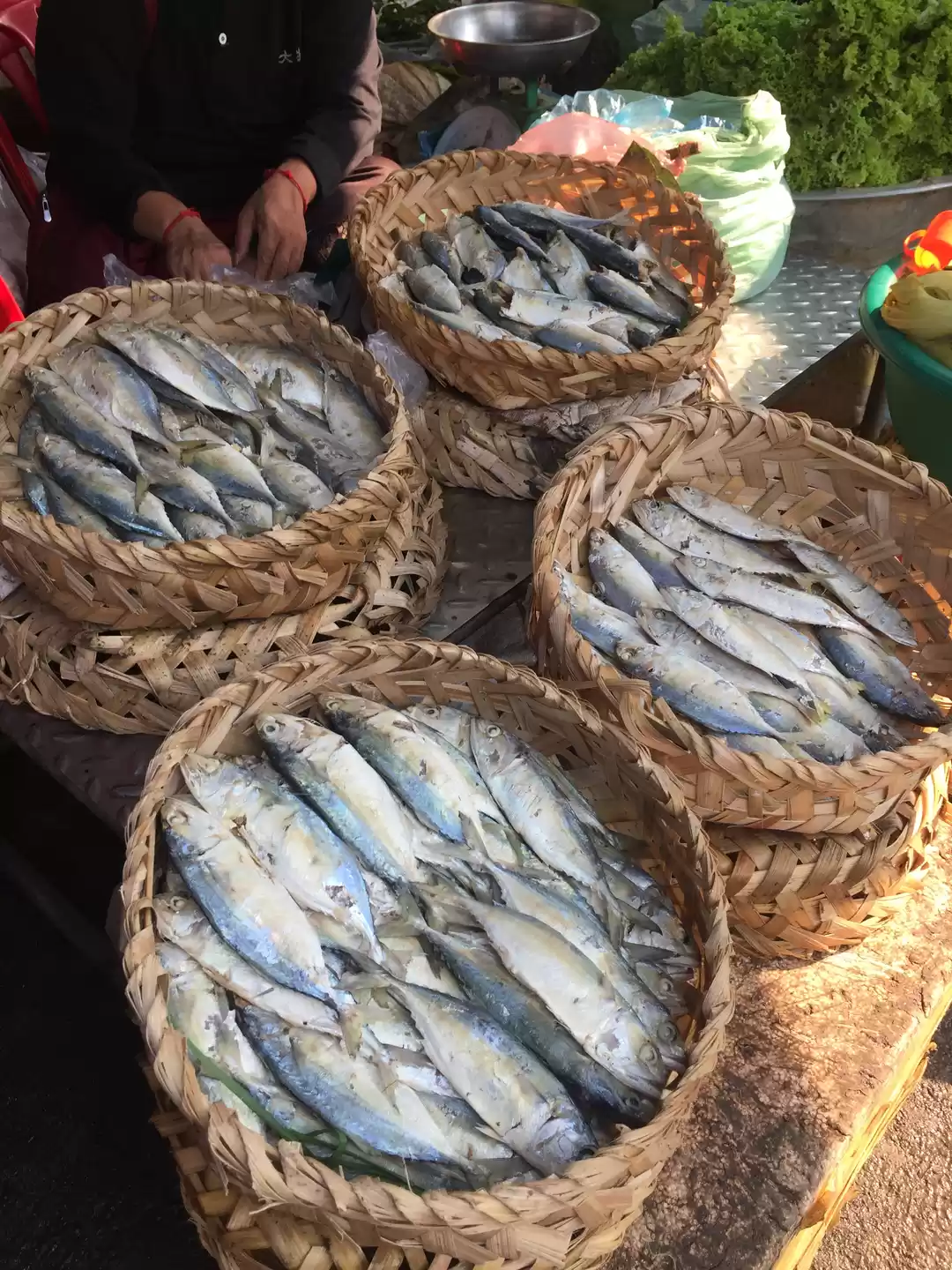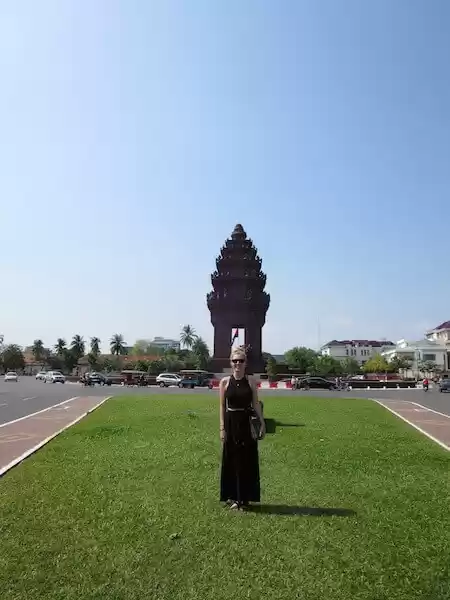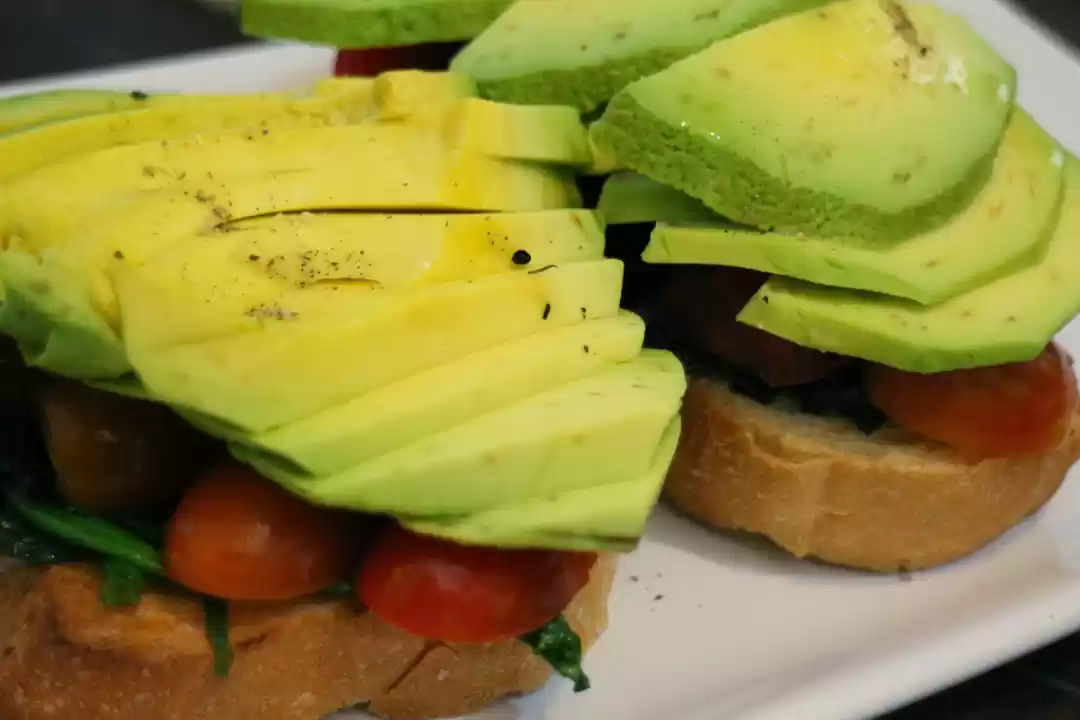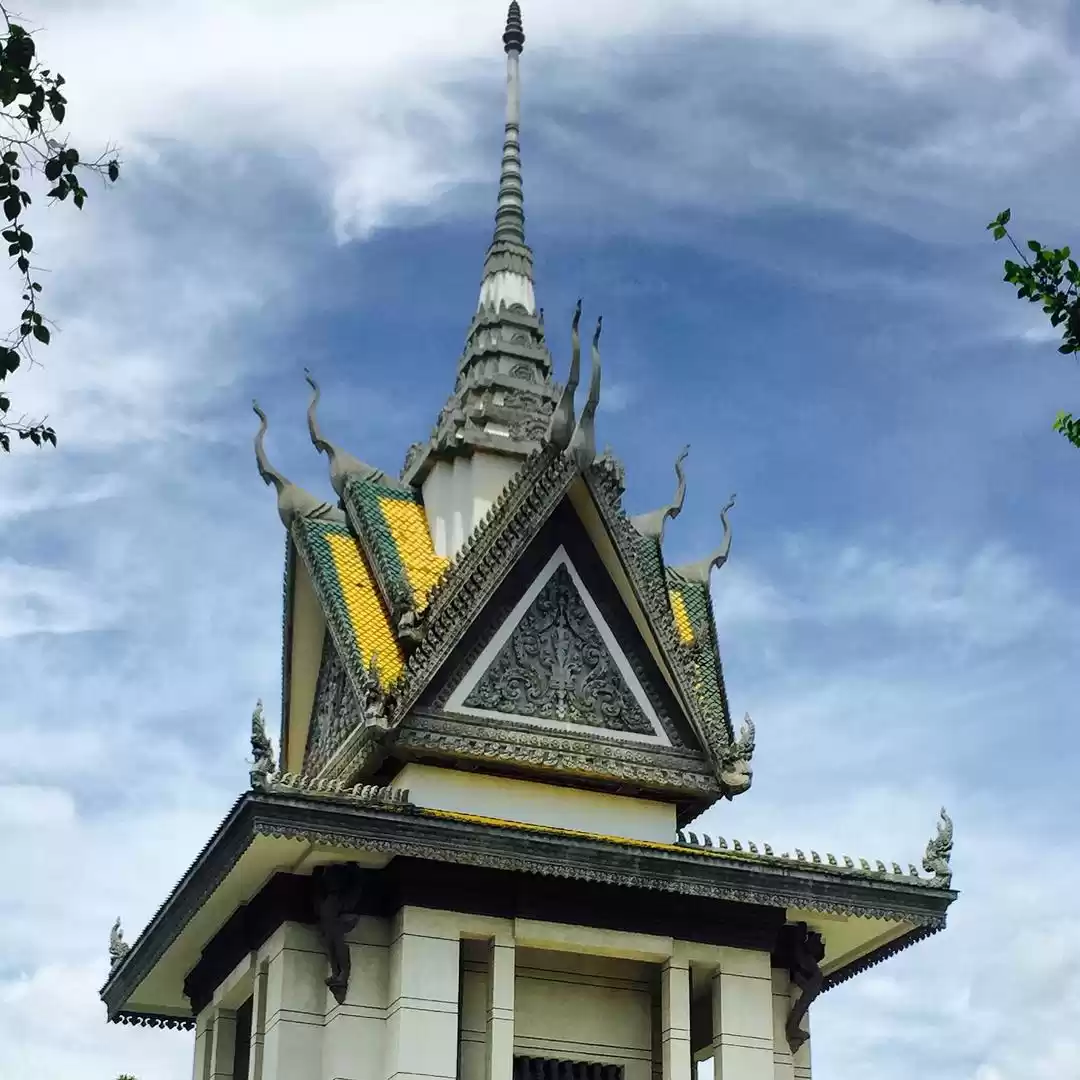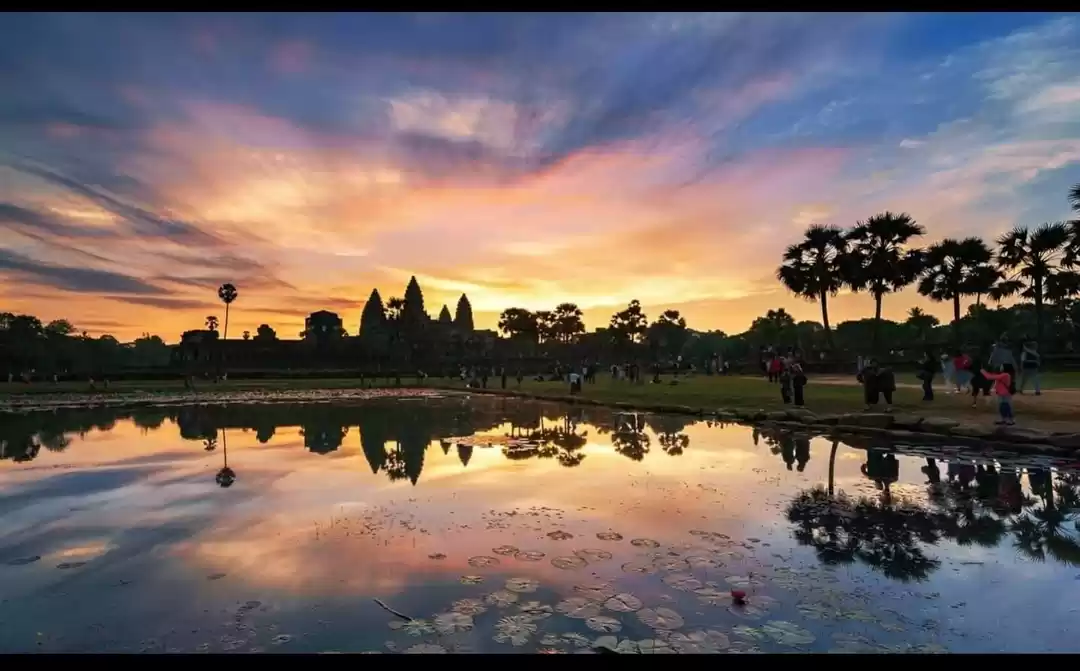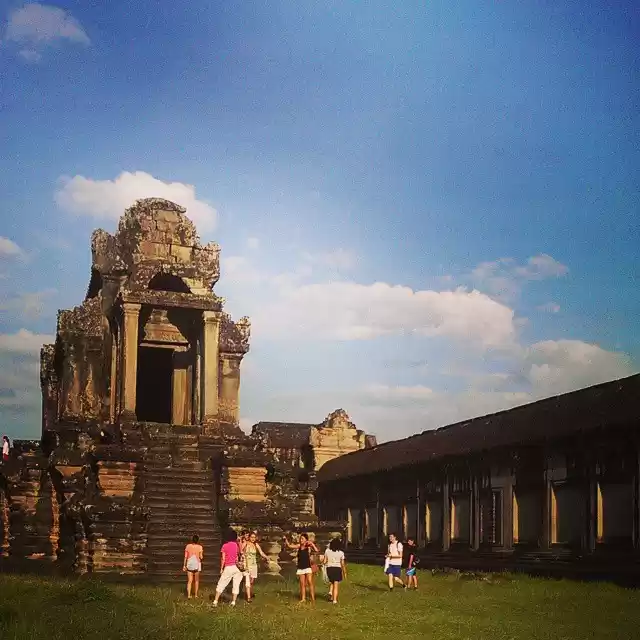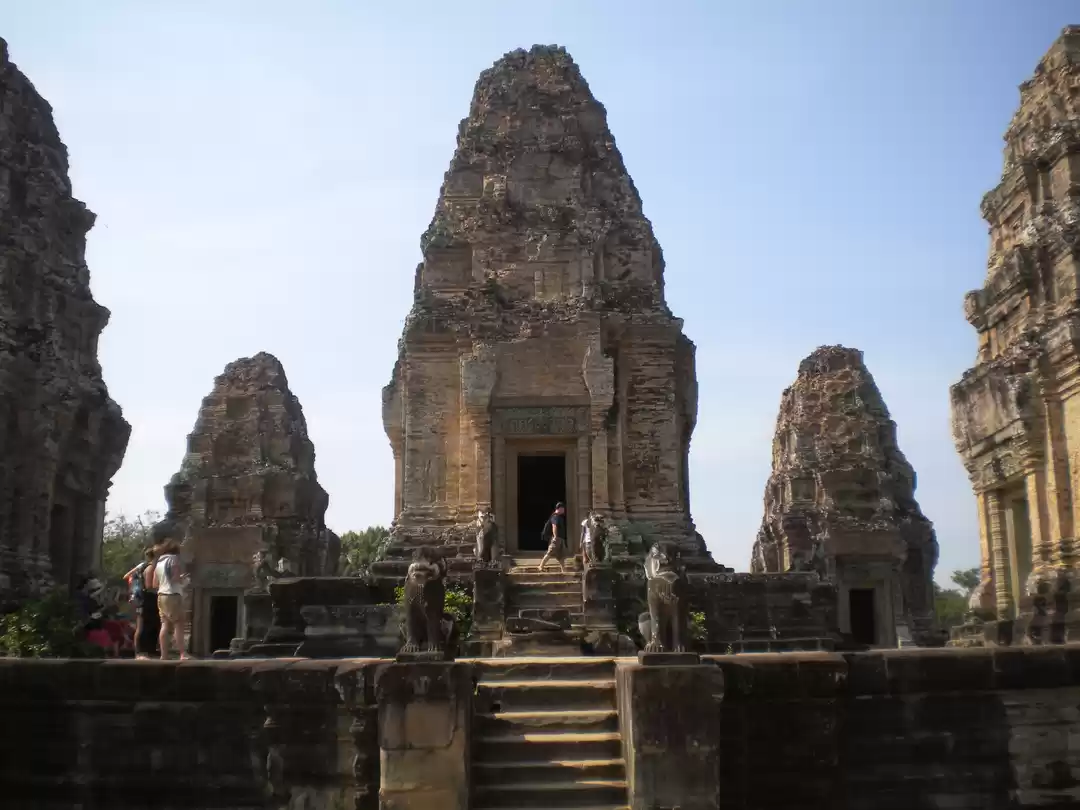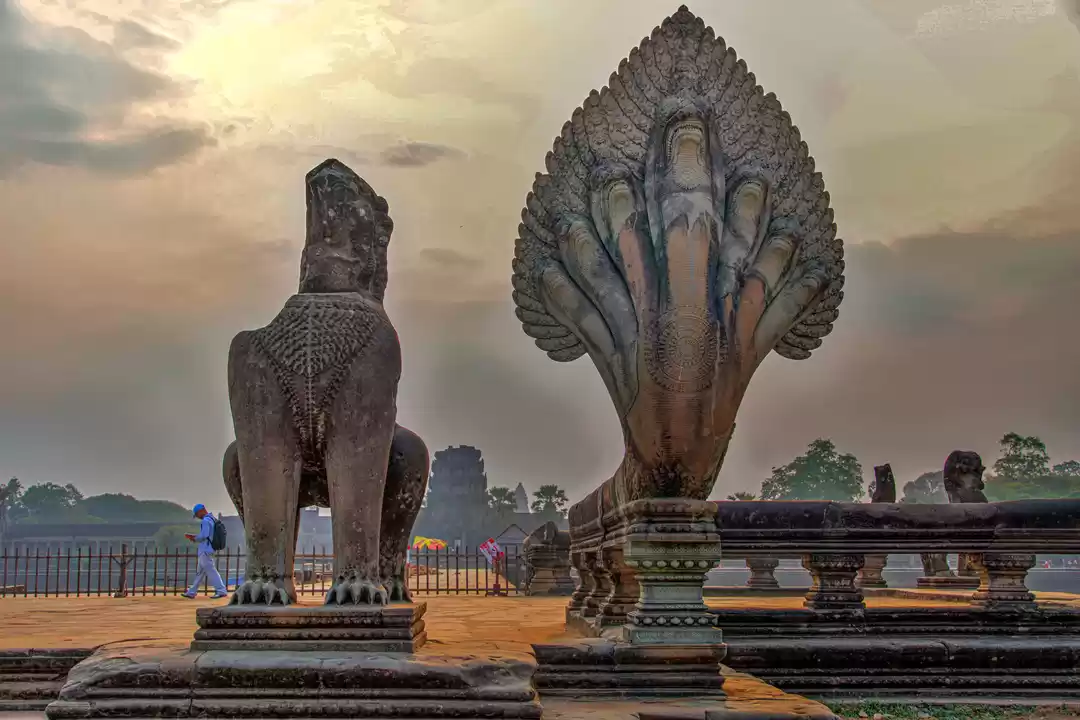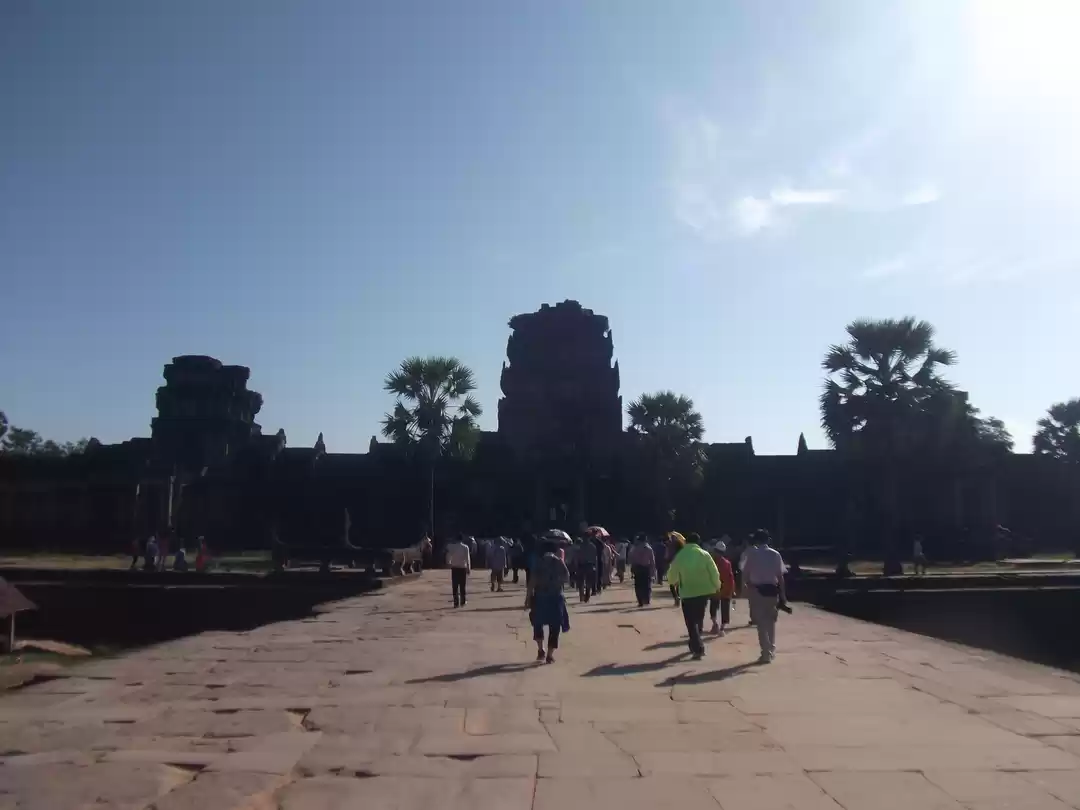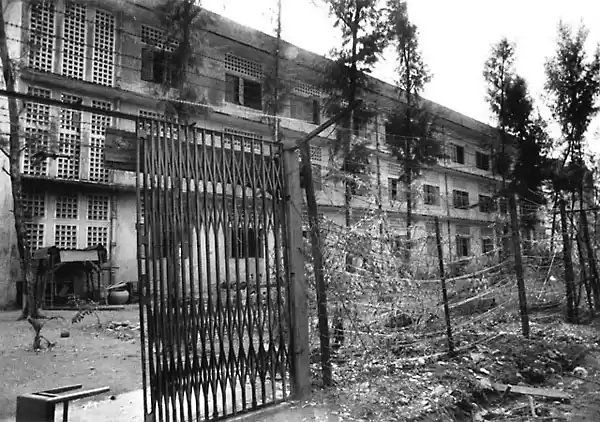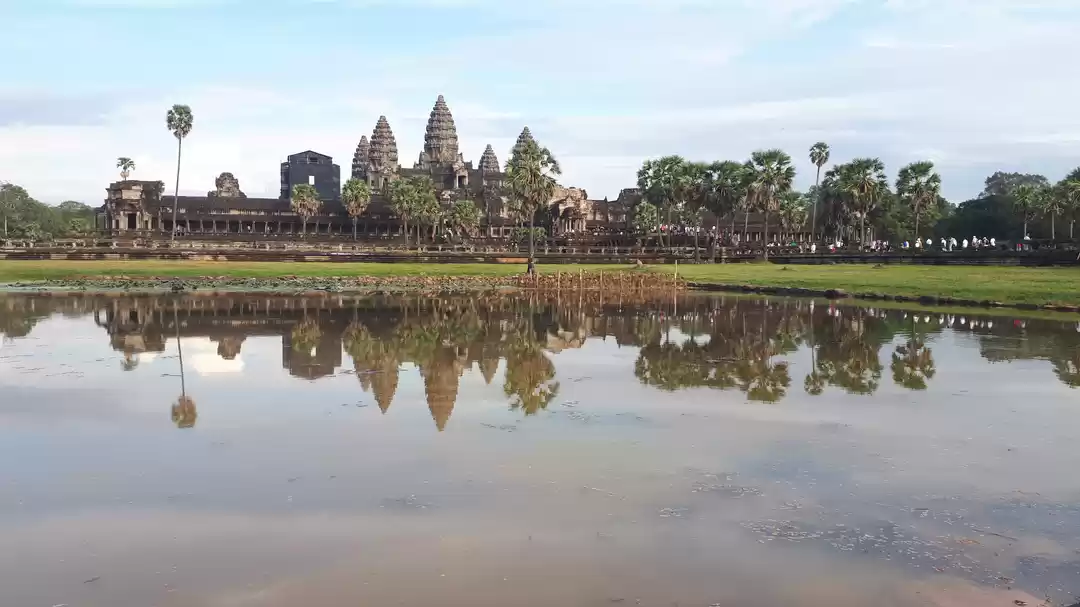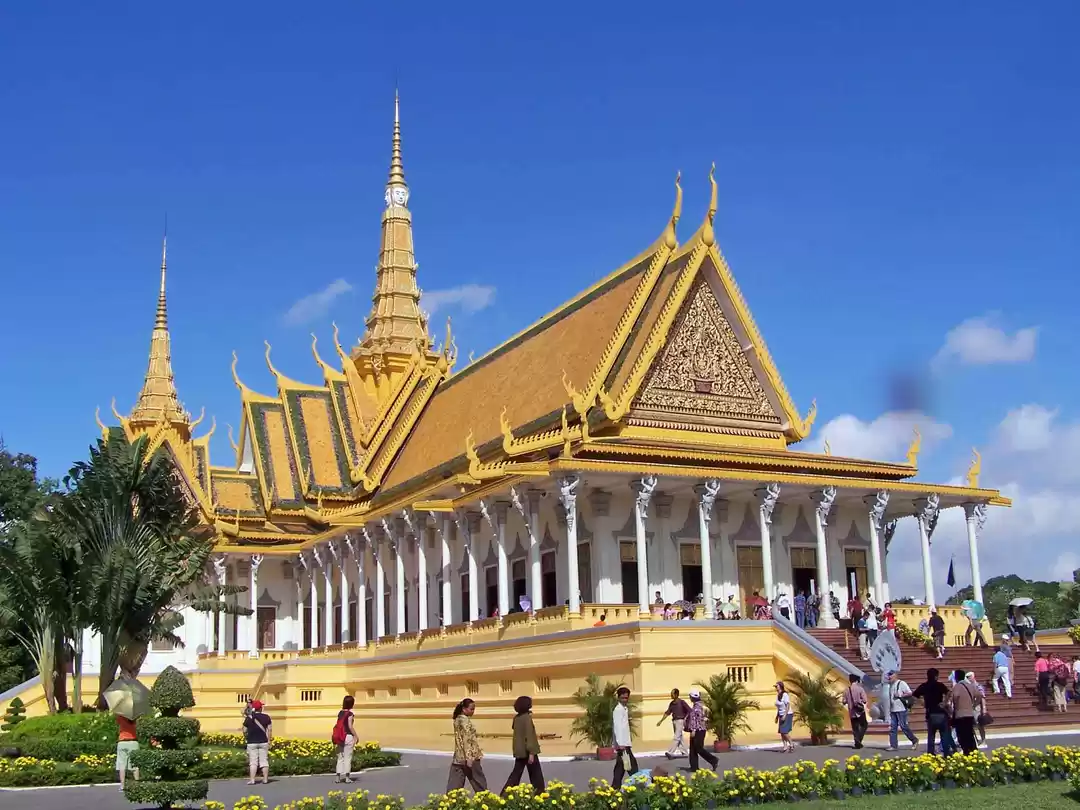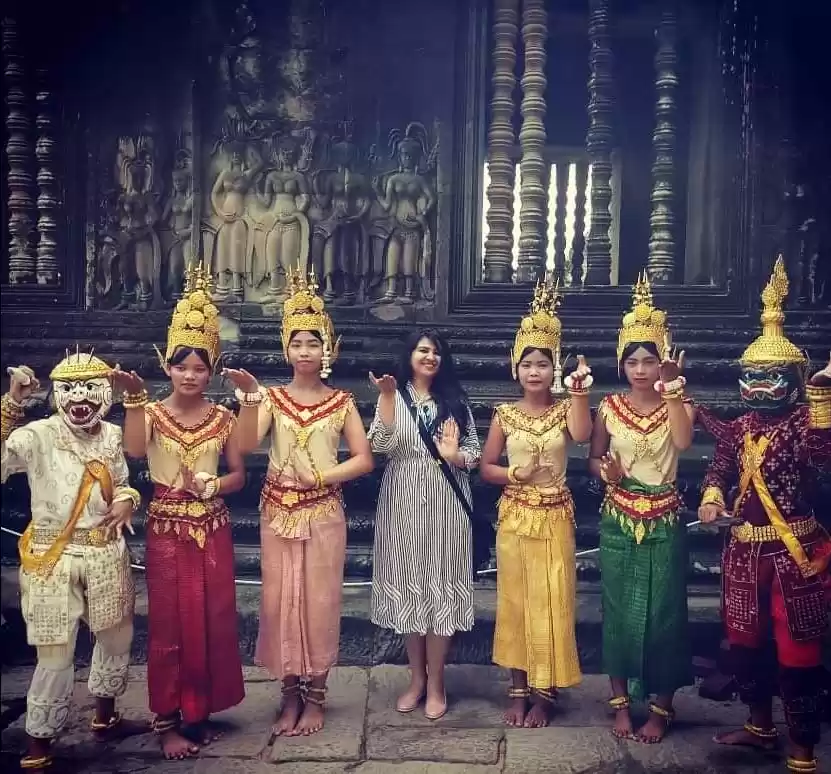
The Monsoon Season Arrives in Cambodia
We had to choose our mode of transport to Siem Reap and opted for a taxi, which was a lot quicker. A couple of Japanese guys were also heading that way, so we teamed up with them and hit the road. We were very excited – Siem Reap is the nearest town to our dream travel destination of Angkor Wat. We were on our way!
As we sped along it started to rain. Kids danced on the roadside, rejoicing in the downpour. Indeed, it was the beginning of the monsoon season and had been unbelievably hot – sweltering, energy sapping heat. Consequently, the rain was sweet relief.
When we arrived in Siem Reap, there was more hassle from a tuk tuk driver who wanted to take us to a different hotel to the one we had already booked! He was a very angry character and after he finally agreed to take us to ours, he collided with a motorbike with a girl perched on the back. Luckily, there was no harm done, but no apology was forthcoming from the driver.
An Early Morning Start
We made it to the Golden Mango Inn, a great budget hotel with friendly staff. Our plan was to walk to Angkor Wat the next day, but when the guy on reception explained just how far it was, we agreed that it would be best to hire a tuk tuk for the day.
We were up at 4.00 am the next morning to meet our driver. He was ours for two days, and thankfully, was a really nice guy. It was still dark when we set off through the streets of Siem Reap in anticipation of the day ahead. We reached the entrance of the Angkor complex where we had our photographs taken for our passes.
Sunrise at Angkor Wat
A little further along, we stopped at Angkor Wat itself, the most famous of all of the temples. We strolled down the walkway leading to the monument in awe, just in time for sunrise. It was a spectacular sight, the sun reflecting in the pool in front of Angkor. Having explored the remarkable temple, we got back on the road in an attempt to beat the crowds.

The Temples
The Angkor Wat complex is the most important archaeological site in South East Asia. It covers 400 square miles of over one hundred 9th-15th century Khmer ruins and is an astonishing and atmospheric place surrounded by dense jungle. Our favourite temples were Bayon and Ta Prohm, which are both stunning.

Bayon has huge sculptural decorations of the Buddha on its exterior, an image that is frequently used to represent Cambodia. Ta Phrom is most well known for being the ‘Tomb Raider’ temple. It is an awe-inspiring example of what happens when nature is left to do its own thing. Tangles of massive tree roots wind themselves round the ancient temple, giving it the appearance of some kind of mystical fantasy land.

It’s a magical place and we sat under a tree for some time, just taking it all in. Unfortunately, our time there coincided with the arrival of bus-loads of Japanese tourists! Nothing could detract however, from the mystique and wonder of this amazing place. It was a very special day and without doubt, the highlight of our Cambodian adventure.

The Roulos Temples
The next day we headed along the highway with our trusted tuk tuk driver to The Roulos Group of temples. These temples, which included Bakong, Lolei and Preah Ko, were the supporting cast to the famous Angkor group. Although less spectacular, they were considerably less crowded, more tranquil and a pleasure to explore.

On our return to Siem Reap, we hit Pub Street for cocktails, food, a little shopping and a fish pedicure! It’s a one stop street that caters to the backpacker’s every need. The Blue Pumpkin, a cafe serving great food with the added bonus of air conditioning offered heavenly relief from the intense humidity outside. Whose idea was it to visit Cambodia in May?!
The Royal Palace and National Museum in Phnom Penh
The next day we caught a bus to Phnom Penh, Cambodia’s capital, about four hour’s drive away. On the bus, we were presented with a small box of freshly backed sweet pastries. T doesn’t eat pastries, so there was a double helping for Ku. (who was hoping that all buses in Cambodia would provide baked goods, but alas, it was not to be!)
In Phnom Penh, we visited The Royal Palace, an impressive Khmer-style building with well- maintained gardens. We also went to The National Museum, which houses the largest collection of Khmer art in Cambodia. It was a pleasant open building in a very pretty setting and we had never seen so many Buddhas in one place.


Tuol Sleng
Tuol Sleng Genocide Museum is the prison building where the Khmer Rouge committed the worst atrocities imaginable. Our visit there was a moving experience. The prison cells and torture chambers had been left in exactly the same condition as when the prison was liberated. The weapons of torture and shackles were still present. In larger rooms, there were row after row of photographs of the victims. The dark history of what had taken place within the walls made for an oppressive atmosphere and we left with heavy hearts.

Kratie - On the Banks of the Mekong
Our next destination was Kratie in North East Cambodia, situated on the banks of the Mekong River. Our bus blew a tyre en-route and we continued for some distance with a flat tyre. We eventually stopped, the tyre was changed, and we continued on our journey to Kratie.
There wasn’t a lot going on in Kratie, but it was a laidback place to spend a couple of days. We watched the sun go down over the mighty Mekong, and then appropriately went for dinner at a restaurant called ‘Red Sun Falling’. It was run by an ex-pat American called Jim who was a bit of a character. The restaurant served a mixture of Asian and Western cuisines, and we ate there two or three times.

We took a boat across the river to a massive sandbar in the middle, where we hired bikes to explore the villages, paddy fields and the single temple. As we cycled past through the clusters of tiny villages, locals waved. It was very rural and an interesting insight into traditional village life.
We also hired a boat to go in search of the Irrawaddy river dolphins. Completely different to the common dolphin, they are smaller with bulbous heads. We did see quite a few, but they were difficult to spot, as only their little heads came above the level of the river.

Despite Cambodia’s horrific recent history, we found the people warm and welcoming and really enjoyed our time there. Now it was time to move on to neighbouring Laos.


